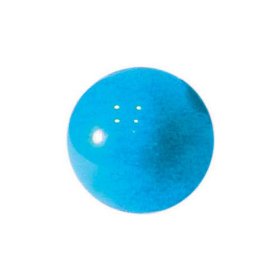Training the Throwing Shoulder Eccentrically to Reduce Injuries and Increase Velocity

Last year I spoke with Dr. Murray Maitland at the University of Washington about all things baseball, physical therapy, and rehabilitation. My primary interest in a meeting with Dr. Maitland was to talk about his study that he performed while at Florida State University – comparing FSU varsity pitchers against Dr. Marshall’s clients. (I never did get a copy of his unpublished study, as neither Dr. Marshall nor Dr. Maitland’s old assistant could dig it up.)
However, Dr. Maitland and I spoke at length about pitching mechanics as well as training the shoulder to withstand the immense stress placed on it during the baseball throwing motion. He said that he really loved Dr. Marshall’s concepts of training eccentrically, referring to Dr. Marshall’s use of wrist weights:
[youtube https://www.youtube.com/watch?v=hyaWrZItlWU]
(That’s Tyler Matzek performing the drop-out windup wrist weight exercises at Lon Fullmer’s training facility. Lon and I don’t get along personally, but I respect his work all the same.)
One of the more popular topics on my website are the use of weighted baseballs at the Driveline Baseball training facility, as well as our training theories on throwing year-round without much of a break. However, it’s equally important to train the shoulder girdle to decelerate the arm safely and to get the larger muscles to take over the force, rather than beating up the small posterior muscles of the rotator cuff. It’s not just for injury prevention and reduction – it’s also for performance and fastball velocity.
Consider this analogy: Assume you have two identical cars on a quarter-mile drag strip. Driver reaction time/skill, chassis, suspension, transmission, tires, frame – everything is the same, except for the engine block. If you’re racing these cars against one another, what do you want more than anything to win the race? Torque and horsepower, of course – a more powerful engine. Of course brakes aren’t vitally important, since after the quarter-mile strip, you usually have quite a bit of distance to roll to a stop without taxing the pads of the brakes that much.
Let’s modify the situation a bit. Again, we have two identical cars located on a quarter-mile drag strip. But 200 feet after the strip, there’s a cliff that plunges into the Grand Canyon! Now what do you care the most about if you want to win this race? You care very much about the stopping power of the car – the quicker and more reliably you can stop, the faster you can go before needing to apply the brakes.

Another situation where this comes up is in the barbell deadlift: Your back, legs, and core may all be strong enough to pick up 600 pounds from the floor, but your forearm muscles and grip can’t hold on to it. When this occurs, you would think that you could pick up the bar and it would slip out halfway up. But in reality, your brain can sense that you don’t have the grip strength to hold on to the bar and doesn’t even let you get it off the ground!
Kinesthetic Sense
We call this “kinesthetic sense” – often used interchangeably with proprioception, even though it’s not exactly the same thing.
The pitching arm works in much the same way: If the brakes are not sufficient for the job, your arm may be holding back velocity in the tank. So training the decelerator muscles of the shoulder can not only help to decrease the possibility of injury (further reading: Isokinetic Eccentric-to-Concentric Strength Ratios of the Shoulder Rotator Muscles in Throwers and Nonthrowers), but can also aid in velocity development.
How We Train Eccentrically
Our pitchers do a lot of common bilateral and unilateral posterior shoulder strength exercises – pull-ups, chin-ups, single-arm DB rows, resistance band work, and the like. However, a unique small medicine ball exercise we do is the external rotation backwards toss:
This movement helps to train the posterior shoulder eccentrically without concomitantly loading it concentrically – making it extremely desirable.
We’re looking to not only build strength in the posterior shoulder, but also muscular endurance and joint stability. So weighted pull-ups and heavy single-arm rows help, but you also have to balance it out with medicine ball tosses, wrist weight circuits (something we’ll integrate more now that the off-season is here), and resistance band work.
Remember: It’s not just the size of the engine in the car, but how effectively it can stop!

Comment section